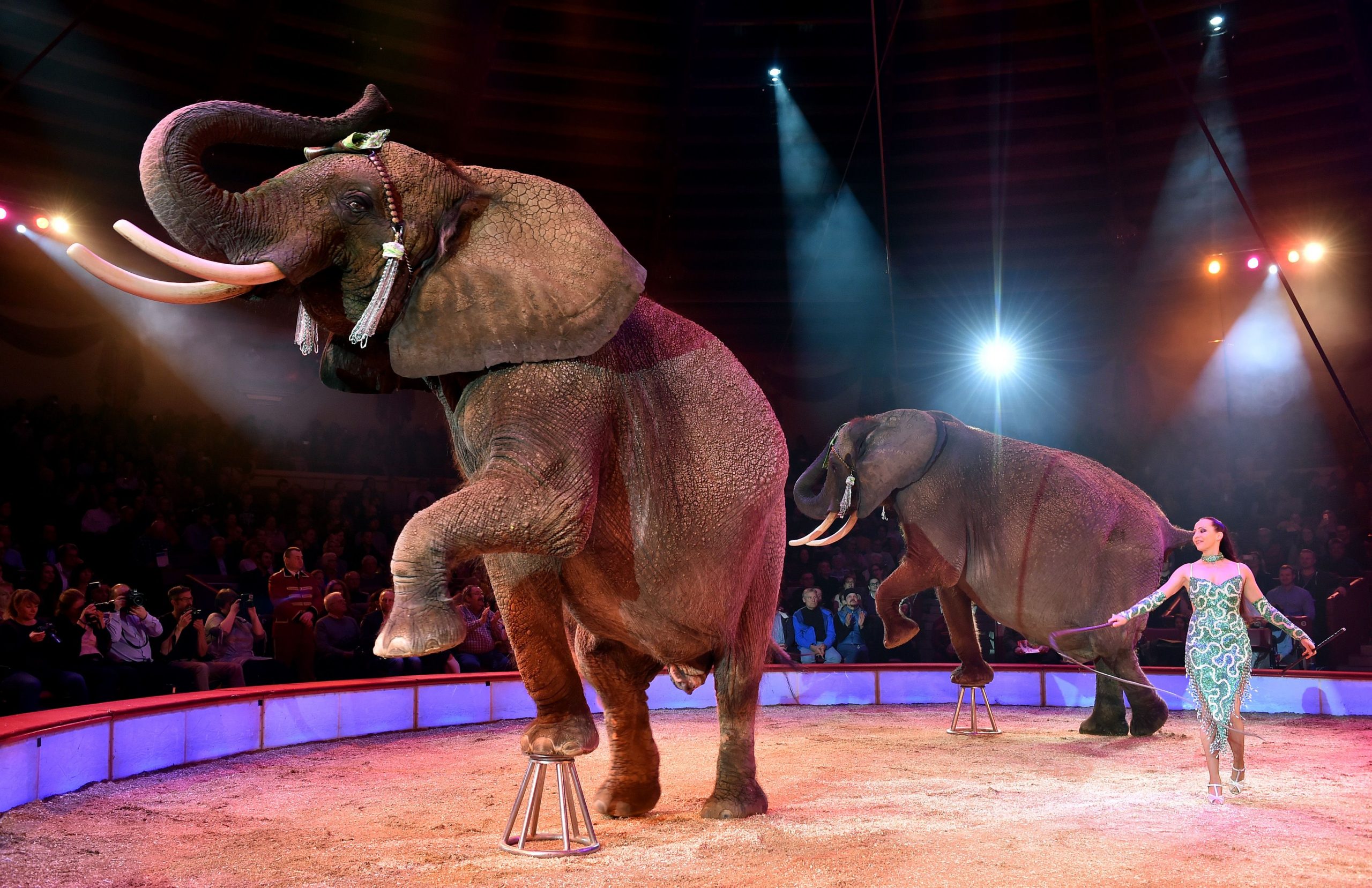Lions, and tigers, and bears, oh my! Flashing lights, cheerful music, children and families together to enjoy a show filled with excitement. The first circus to open in the United States was held in Philadelphia, 1797. Horses were being used in circuses since the late 1700s. Over multiple years, the animals progressed into other wild animals such as tigers, elephants, monkeys, and lions. But does the audience know what goes on backstage? The experience of viewing the show may be entertaining and educational; however, animals go through harsh routines of boredom, stress, and pain. Many circuses breed their animals and begin training them. Each animal goes through specific training for their acts. Tigers may practice jumping through hoops, lions that are tamed on stage, and elephants are trained to balance on small objects and walk on tightropes. Should the animals be taken out of the show?
Circus animals are confined in cages for the majority of their lives. For 11 months they travel long distances in train cars without climate control. Keeping them in small cages can cause psychological and physical damage. If the animals are miss behaving they go under cruel punishments such as whipping, hitting, poking, and shocking with electric prods. By training the animals to do specific tricks and acts, it can make them feel uncomfortable and emaciated. Teaching an elephant to stand on one leg, training wolves to jump through hoops, and forcing a wild bear to ride a skateboard. Although this may seem impressive, it’s causing pain and harm to the animals.
Not only do the animals feel threatened, they can also be a threat to public health and safety. Elephants can be known to carry tuberculosis which can affect humans with a bacterial disease. According to the Paws website, since the 1990s circuses have been responsible for over 100 human injuries worldwide.
The animals that are being used for entertainment purposes have ecological needs. If these needs are not being considered, such as specific climates, food, and sleeping habits it can cause the animal to become stressed and depressed.
Recently, most circuses have taken action in helping their animals. Roncalli, a circus in Germany, has taken a technological approach in an attempt to fight against animal cruelty. This circus still features real acrobats and your basic performances; however, they have invested in holographic images to be portrayed on stage. The realistic images give off real- life portraits of each animal. Many people say it’s similar to watching a movie; however, these holograms do not make a difference when viewing the animals on stage. All of the holograms are showing all types of tricks the animals would normally perform if they were included in the circus. The benefit of using technology is that it can give the audience a better show and more entertainment rather than feeling guilty for watching the animals being forced to perform on stage.
Last month in September, California’s government passed a new bill banning all circus animals. This bill bans anyone in California using wild animals to perform circus acts and tricks except domestic dogs, cats, and horses. People are also hoping in the near future that domesticated animals will get the same protection against cruel treatment in the circus The public demand for banning circus animals has been growing worldwide. Petitions are being made all over social media and in multiple states to ban the use of wild animals in the circus. Also, in 2015, Ringling Bros, and Barnum & Bailey would retire their elephant acts in 2018. Exotic animals are leaving the circus industry slowly which makes a greater impact on the environment. Not only has the United States been taking action, Denmark buys 4 circus elephants to retire them. They spent $1.6 million to buy the country’s last four circus animals to give them proper care. The ban on wild animals is expected to be later this year in Denmark as well. Many places across the globe are taking action to protect and help secure wildlife. Hopefully, more petitions and laws will be created for the protection of animals. Additionally, people believe the acts that are performed with the performers could be dangerous putting their lives in danger. The animals become violent while performing an act causing chaos and destruction to the show.
However, others may disagree with banning circus animals. People believe the show must go on with live animals. In 2015, there was a study on how the circus treats the animals. The 18-month study was done by Dr Marthe Kiely-Worthington. From the study, it was discovered that the circus animals do not go under any stress during training, transportation, and performance. It was also stated that the relationship between the animals and the trainers contribute to the way the animals think and act. Also in recent years, it was known that every aspect of the animals’ life is under strict government guidelines. Such as the animals’ diet, environment, and safety. According to the Huffington Post, the animals are in safe conditions when attending the circus for their performance. The average life expectancy for a tiger in the wild is 15 years; however, in the circus, it is known for them to live up to 26 years. Others argue that it’s more entertaining to the audience if the circus consisted of live animals and will attract the public.
Today, many circuses are still performing with animals. However, Each circus is different. Multiple opinions have come up due to the treatments and safety of animals. Recently, circuses have been alternating their acts with acrobatics and suspenseful stunts. People all over the world have had debates on freeing the circus animals to their original lifestyle. The holograms in Germany took a major effect causing the show to become more entertaining to the audience. Therefore, should these animals stop performing and be replaced by technology or should the show go on including live animals?
